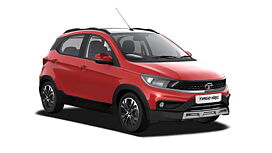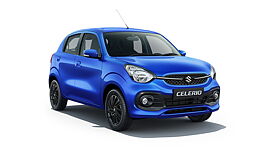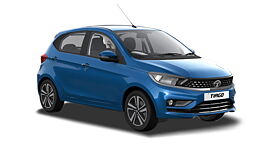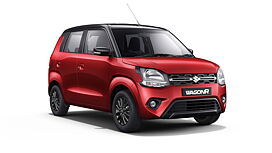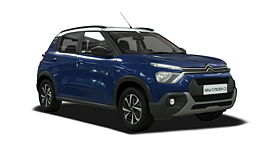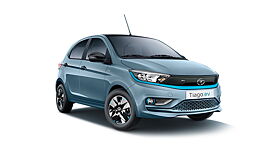4.0 ఎక్స్టీరియర్ | 4.0 కంఫర్ట్ | 4.0 పెర్ఫార్మెన్స్ |
3.0 ఫ్యూయల్ ఎకానమీ | 3.0 వాల్యూ ఫర్ మనీ |
Shifting into the fifth cog, the i10 gets into cruise mode. At 120 kph and with the tacho needle nestling at 4500 rpm, the new compact from Hyundai is pretty keen on consuming the miles between Jodhpur and Jaisalmer. The roads are relatively empty and smooth, while the integral 2-DIN stereo, for a factory-fitted unit, sounds pretty good too.
We are out in Rajasthan, evaluating and testing this ambitious model from Hyundai. Ambitious because it is only being produced in India for the rest of the world, and also because it has severe competition from a host of other cars, including Hyundai’s own Santro Xing and Getz Prime... well, it fits between the two, actually.
The car is clearly an upgrade over the Santro – to call it a 21st century version of the Santro in fact wouldn’t be out of place. Which means it’s safer, built even better and makes life comfortable within, for both the driver as well as all the passengers. And it is more mature when it comes to driving dynamics too.
The needle, in between my meandering, has meanwhile steadily risen upward to 140 kph. I have the highway to myself, so I can take a look around the dash of the i10.
The instrument console pays tribute to the Santro’s own mushroom-like unit, but the gauges and lights are quite funky. The rest of the dials and switches are of high quality and I am pleased to note that Hyundai has not raided its existing parts bin for this car.
The seats are also pretty unique – they ape the ones made by Recaro and other sports seat manufacturers, by making the head restraint an integrated part of the seat. And overall, they are good enough to keep you comfortable over long drives — the almost 600 km that we spent driving the car was proof enough.
However, the most important part you’ll notice inside the i10 is the placement of the gear lever. It is almost Japanese car-like, sitting high up in the central console, therefore liberating space between the seats.
Okay, let me put it in another way. If you place a bottle in the holder provided just below the gear lever, your hands might unconsciously shift the bottle instead of the gear lever... Oops. In real life, it’s not as bad as I just made it out to be, and it is in fact a clever little thing that you’d get used to in no time.
Credit should be given to that little 12-valve four-cylinder 1086cc unit for keeping the buzz going on the highway. It sounds just a bit stressed but doesn’t show it even while consistently maintaining high speeds.
Developing 65.7 bhp at 5500 rpm and 10.1 kgm at 2800 revs, the engine is familiar to the hundreds and thousands of people who swear by the Santro Xing. Only, in this application, it is a wee bit more powerful.
This engine is one of the best in the business and combined with that slick five-speed gearbox, is an irresistible combination. The ratios are well-spaced out to extract as much driveability as you can get — in fact, the first three gear ratios are identical to that of the Santro Xing.
If you have driven the older Hyundai in the city, you know what a good deal that is. It’s something I noticed while getting in and out of Jodhpur during our i10 drive. The flow of power is even, there is torque on demand and the shifts are kept to a minimum.
But shifting gears is also something you wouldn’t mind doing in this car, as the short-throw gear lever is a delight.
Hyundai usually get their small cars bang-on. With the Santro, Getz and now the i10, the critical elements that make a small car buyer happy — a peppy engine, a slick gearbox and an accurate steering — are in place.
In this car especially, the motor-driven power steering is a new feature. It runs independent of engine power, which aids in fuel efficiency. That apart, it is easy enough on your hands on congested city streets while it stays quite tight on higher speeds on the highway.
The i10’s driving dynamics are also a level above that of the Santro. Featuring McPherson struts at the front and a coupled torsion beam axle at the rear, the i10’s capability when it comes to handling is best felt while taking on sweeping curves at speeds well above 100 kph. It is perfectly at ease over the long sweepers you encounter on NH114 between the two towns and sticks to its intended trajectory without giving you a hint of the stress it’s taking.
Combined with tubeless tyres, the roadholding is better than expected from a car of this dimensions. The ride quality on offer again is better than that of its lower priced sibling, though it was a bit on the bouncy side, especially at lower speeds. I would have preferred if the tyres had a wider footprint and a lower aspect ratio, as Hyundai has opted only for 155/80 R 13s to aid in fuel consumption.
Ah, that confounded thing, again. Which I am sorry I can’t tell you about because we went hell for leather with the i10 and it wouldn’t reflect on the true figure the car delivers.
Irrespective of that, the i10 has a lot of things going for it. It is good-looking, well-built, well-engineered with quality bits, has a proven drivetrain and is about as spacious as cars in this category can get.
Besides it comes with a host of variants that suit differ
Good Style, performanceLess rear space, interiors
